More than a decade after it was established as a community for those in need of a house, the ambitious Diamond Scheme on the East Bank of Demerara continues to grow but as the area expands residents are calling on the authorities to upkeep critical services.
The housing scheme, which is home to more than 25,000 persons, a figure which expands yearly, was initially set up as a low, middle and high income housing settlement around 1997/98 on what once stood lush canefields.
Located minutes from the city, the housing scheme has seen a construction boom in recent years in the form of homes, businesses and support infrastructure to add to its growing reputation as an emerging small town.
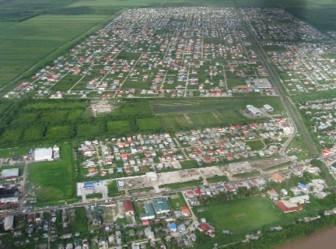
Housing Minister Irfaan Ali told this newspaper that over the past eight years, the government via the Housing and Water Ministry has invested more than $829M on the construction of roads, drains, other structures including the installation of the new well which he noted was highly beneficial for residents of the housing area.
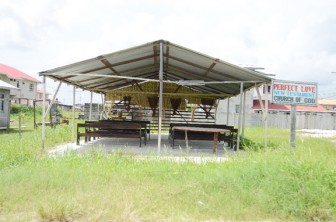
In 2004, the government invested $40m on the construction of roads and drains at the middle income section of the scheme. In 2005, more than $493M was invested in the Block X area of the scheme on infrastructural works which resulted in the creation of 4,000 house lots, with benefits to some 16,675 persons.
According to the Housing Ministry, between 2009 and 2011, more than $240M was expended on Diamond, in the areas of water, roads and other works. The Housing Ministry breaks down the figures to $131,000 per household.
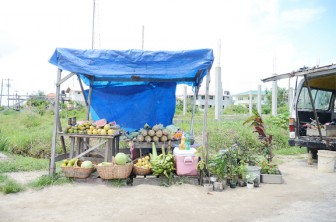
At the same time the residents have undertaken their own developmental work to their homes and environs which adds to the upward trend the community and its neighbour Grove has seen in recent times.
The Housing Ministry noted this year that land on the Diamond main road which runs in an east-west direction will be expanded into housing, bringing the number to nearly 15,000 new house-lots at the end of the East Bank Development Infrastructure project.
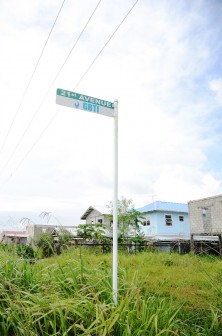
And as the Four Lane Providence-Grove highway project takes shape, residents noted that they were bracing for the traffic congestion which will come with the project, a fear many expressed given the already busy roadway which sees long lines of traffic on a week-day morning.
Alternative entrance
The Housing Minister had told residents this year that, the Ministry has collaborated with the Public Works Ministry to conduct a study of the traffic situation and has decided that in addition to the four-lane road, an alternative entrance and exit road to the scheme is needed.
“We have earmarked an area between the borders of the Topco juice factory and the GuyOil gas station’, he indicated earlier this year to the Government Information Agency (GINA). He told this newspaper that the alternative route will cushion the build-up of traffic anticipated at the existing entrance to the housing scheme.
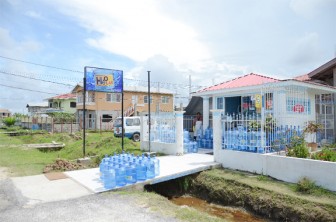
The community boasts three banks. Demerara Bank Limited, Guyana Bank for Trade and Industry (GBTI) and Republic Bank (Guyana) all opened their doors at the public road at Diamond last year, a move which the investors noted hinged on the premise of community development and customer convenience where East Bank Demerara residents are concerned.
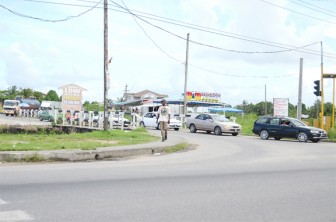
More recently an elaborate food court, which houses outlets of the popular fast food companies in the country, including the Royal Castle brand as well as the locally created JR Burgers, opened their doors to serve the area.
A small market also sits at the entrance of the housing scheme. Residents noted that a multi-million dollar market tarmac sits unused on the opposite side of the community at Grove. They are at a loss as regards when it will be utilized.
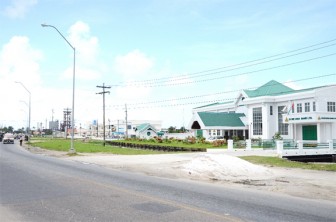
The GuyOil Gas Station and numerous shops have also added to the growing image of the community. Road side vending has taken the community by storm, as has been the case across the country. On a given morning, trucks line up along the roadway at the entrance of the Housing Scheme as vendors selling mainly chicken catch the early morning rush. According to one of the truck owners, the area is a prime spot since many persons from the housing scheme would stop and make their purchases as travelling to the city markets appear a tiresome job these days.
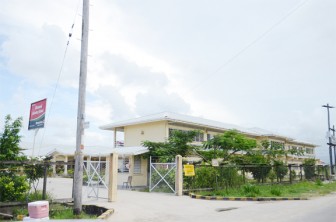
The community relies on the services of the Diamond Diagnostic Centre, a hospital which is flocked by residents of the community and nearby areas almost daily. There is also the Diamond Secondary School which adds to the enhancement of the community and to date, according to the Ministry of Education more than 560 students have been enrolled into the A-grade school.
Construction
companies
As regards private entities, several companies, including the SM Jaleel beverage company, the Trinidadian Company which produces the Busta brand soft drinks, have set up their businesses in the area and the community also relies on the services of construction companies which have been established in the area. Some have set up sub offices there as well.
These forms of development are good for the community, residents told Stabroek News during visits recently and many observed that while the area is on the road to development, several issues needed to be addressed.
One such issue is garbage collection, and residents noted that it has been an issue which had been affecting them for several months; some noted that it became more worrisome this year. They said that the Neighbourhood Democratic Council (NDC) is the responsible agency for garbage collection. However, the body has been lax in its duties and residents have been forced to dump garbage aback the community while some burn their refuse in their backyards.
Renata Green of Seventh Street, Section B of the housing scheme, told this newspaper during a recent visit that she moved into the community from the city three years ago to her single-flat home with her family. She said that initially settling into the community proved difficult, as was expected. She said that the street where she lived had a few homes and she said that “I had to settle in like anybody else”.
She said that as time progressed she began to enjoy living in the community. Short-drop cars ferry persons to and from their homes, the ease of being able to carry out bank transactions “right at the front of the scheme”, and having most necessities in the area were only a few of the reasons she found “nice bout this area”.
Green said too that there are a few issues which the NDC needed to address, one being garbage collection, an issue which she and most persons who this newspaper spoke to, noted has affected most people. She noted that some persons are forced to dump their garbage aback the community. She said too that the quality of the water which runs through the pipe needed to be improved.
Two years ago the government commissioned a $56M well in the community, a move which was expected to benefit some 8000 persons at Diamond and nearby Grove, and according to 19th Street resident Paul (only name given), “sometimes the water dat come through the pipe and when it running, you can’t use it”.
Paul, who is one of four persons who operate small grocery shops at Diamond, noted that the issues which are highlighted by residents appeared to be falling on “deaf ears”. He said that he moved into 19th Street when the housing scheme was being established, more than a decade ago, he added. He said that “when I move in here, the street didn’t do (rehabilitate) and was only me and two other residents here”.
The businessman noted that since moving into the area, the streets have been poorly maintained, and he noted that persons were wary of expressing their concerns to the NDC in this regard. He said that the provision of street lights was another matter which needed to be examined by the relevant ministry, since according to him; the area is usually very dark at nights. Paul noted that several persons have placed street lamps close to their homes, “so it would help them but what happen to areas where people cannot afford that”, he asked.
At the same time, many expressed concerns over the under-maintained house lots since according to them they can serve as hiding grounds for petty thieves amid the thick vegetation. On this note residents stated that criminal activities occur at sporadic times in the area. Ganesh Singh of Section B of the community noted that Diamond is “safe” where crime is concerned but he noted that there are the odd incidents such as persons’ homes being broken into and their household goods being removed.
He said that this may be related to persons entering the community to carry out works on homes there. “Sometimes you have to use you logics and while the police can do so much, the obvious thing to look at is that you have some fellas who come in here to work but they also looking at what you have”. Other residents, many of whom chose not to give their names, told this newspaper that the roads in the community would continue to be an issue since they are used almost daily by trucks, mainly those transporting sand, earth and stone. But residents noted that poor work on the part of the contractors can also be blamed for the shoddy state of several roads.
A resident of 6th Street or ‘School Street’ as it is widely referred to, told this newspaper that he was provided with “some disturbing’ information as regards the works completed on the roadway. He said that while works were being undertaken by the contractor on the street, he was told that the workers had run short of the materials provided for the project. He said that the workmen were told that “they should stretch the materials” and according to him, a section of the roadway was three inches thick while another was two inches and then eventually a thinner section to complete the street.
Playfields
Residents also expressed concern over the three sections of the community which were set aside for the construction of playfields. To date none of the three parcels of land have been developed into playgrounds even as there were moves by the authorities to transform the unused lands into house lots. This newspaper understands that the authorities had made moves to sell the parcel of land at Section B in the community but the move was protested by residents.
According to the Housing Ministry, between 2004 and 2009 the government spent more than $543M on infrastructural development of the Diamond Housing Scheme and in 2011, following the implementation of the Caribbean Development Bank (CDB) funded, Community Road Improvement Project (CRIP), approximately $100M will be spent to improve the roads in the older sections of the housing scheme. These investments according to the ministry are aimed at developing the sector and providing a home for many Guyanese, mainly first time homeowners.
In 2004
In 2004, Stabroek News had interviewed then Minister of Housing Shaik Baksh on the scheme and he had referred to its origins. Five thousand lots had been allocated in the scheme, he noted. They were situated on approximately 1,000 acres of canefields. The scheme comprised lots for low and middle-income families. The low-income lots sold for between $58,000 and $90,000 and the middle income lots for between $500,000 to $1.2M. The scheme was divided into sections A, B and C. Up to that point, Chief Executive Officer of the CHPA Myrna Pitt had said that $1.2B had been spent on infrastructural development for the scheme.









